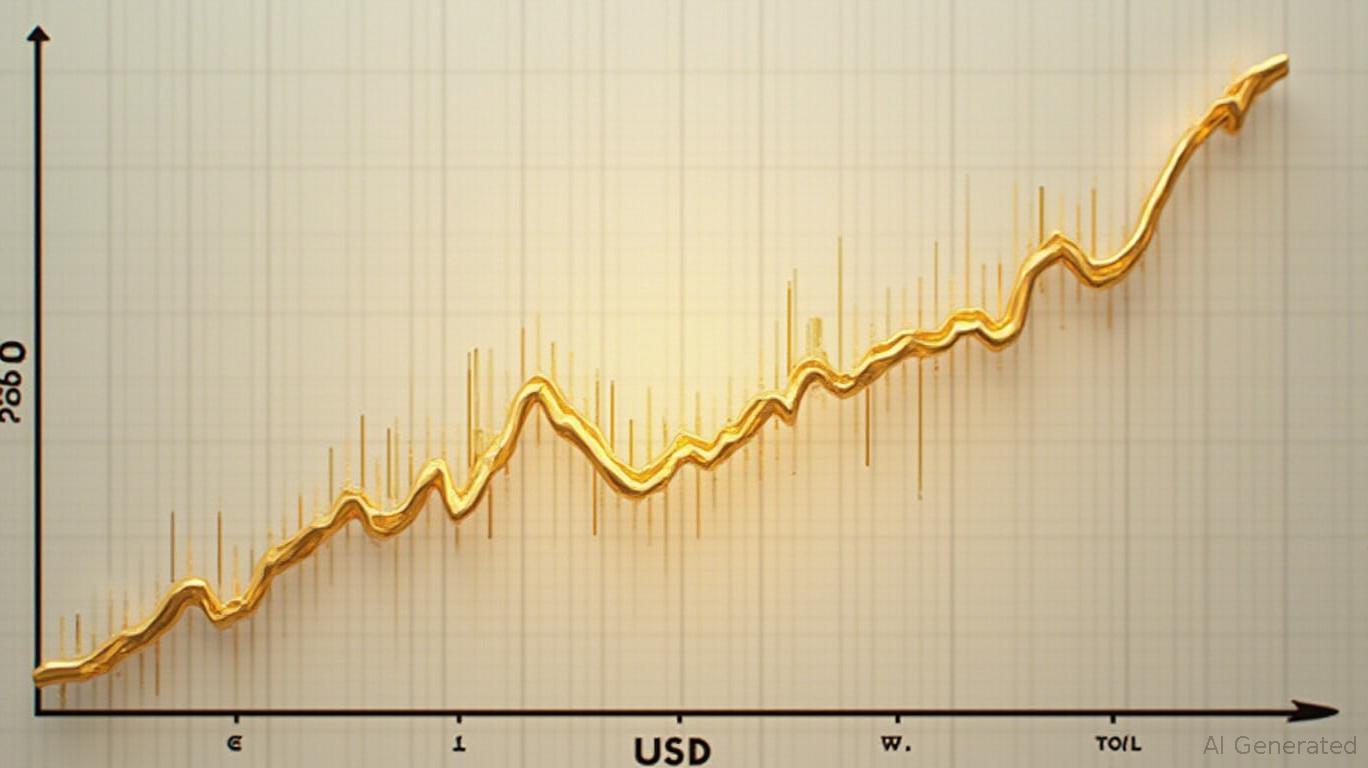The Fragile Greenback: Why Tariffs and Policy Uncertainty Are Fueling a Dollar Sell-Off
The U.S. dollar, long the world's reserve currency, is showing unexpected cracks. Despite the Trump administration's aggressive tariffs—dubbed “Liberation Day”—intended to shield
, the dollar has plummeted to multi-year lows. This paradoxical outcome reveals a deeper truth: trade wars and policy uncertainty are destabilizing global markets, pushing investors toward safe havens and leaving the greenback vulnerable.The Paradox of Tariffs and Dollar Weakness
The April 2025 announcement of 10% tariffs on imports from 180 countries, paired with retaliatory measures from trading partners, should have strengthened the dollar. After all, tariffs raise import costs, theoretically boosting demand for U.S. goods and the currency needed to buy them. Instead, the dollar index plunged by 8% in the months following the tariffs, defying conventional wisdom.
What explains this? The answer lies in portfolio rebalancing. Foreign investors, fearing prolonged trade wars and U.S. economic stagnation, sold dollar-denominated assets—like Treasuries and equities—to buy euros, yen, and francs. This flight to safety drove the euro up 3% against the dollar in Q2 2025, while emerging markets like Thailand and South Africa saw smaller depreciations, reflecting their rigid currency regimes.
The Fed's Dilemma: Rate Cuts vs. Inflation
The Federal Reserve finds itself in a no-win scenario. While tariffs have raised U.S. tax revenues by $156 billion in 2025, they've also triggered retaliatory tariffs on $330 billion of U.S. exports, squeezing GDP growth. The Fed's June meeting revealed its struggle: officials projected only one rate cut for the year, fearing further easing would stoke inflation. Yet stagnation risks persist, with the ISM Services index dipping into contractionary territory.
This hesitation is costly. Small-cap equities , already down 15% year-to-date due to their sensitivity to rising interest rates, face a bleak outlook. Meanwhile, tech stocks—though buoyed by AI-driven gains—remain vulnerable to a Fed forced to prioritize inflation over growth.
Safe Havens: Gold, Yen, and the “Risk-Off” Trade
The dollar's decline has created opportunities in traditional safe assets. Gold

Equity markets reflect this shift. The MSCI Europe index outperformed the S&P 500 by 8% in Q2, as capital fled U.S. equities. Even within tech, the divergence is stark: AI leaders like NVIDIA thrive, but smaller firms reliant on global supply chains—or U.S. consumer spending—are lagging.
Why Small-Caps and Tech Are Losing the Currency War
Small-cap stocks are doubly punished. Not only are they exposed to rising borrowing costs (due to shorter-term debt maturities), but their business models often depend on U.S. consumer spending, which is slowing. The S&P 600's 15% underperformance versus the S&P 500 underscores this divide.
Tech's resilience in AI sectors is no shield against broader economic risks. While sectors like semiconductors and cloud computing show growth, the sector's overall volatility remains tied to macro uncertainty. Until tariffs are resolved—or the Fed cuts rates aggressively—tech's gains are likely to be uneven.
The Investment Playbook: Pivot to Defensives
Investors must recalibrate portfolios for this new reality:
1. Hedge with Gold and Bonds: Allocate to gold ETFs (e.g., GLD) or Japanese yen pairs (e.g., FXY) to offset dollar weakness.
2. Short the Dollar: Use inverse dollar ETFs (e.g., UDN) or currency forwards to profit from further declines.
3. Avoid Small-Caps: Until the Fed delivers clear rate cuts—and trade tensions ease—stay cautious on small-caps.
4. Pick Defensive Tech: Focus on AI leaders (e.g., NVDA, AMD) with pricing power, but avoid cyclicals tied to consumer spending.
Conclusion: The Dollar's Long Road Back
The greenback's decline isn't just a currency story—it's a warning. Tariffs have sparked a global rebalancing, and the Fed's constrained hands mean the dollar's weakness could linger. For now, the playbook is clear: prioritize safety, avoid cyclical risks, and let the dollar's fragility work in your favor.
As the saying goes, “When in doubt, buy gold.” In this era of trade turmoil, it's not just a slogan—it's strategy.

Comments
No comments yet